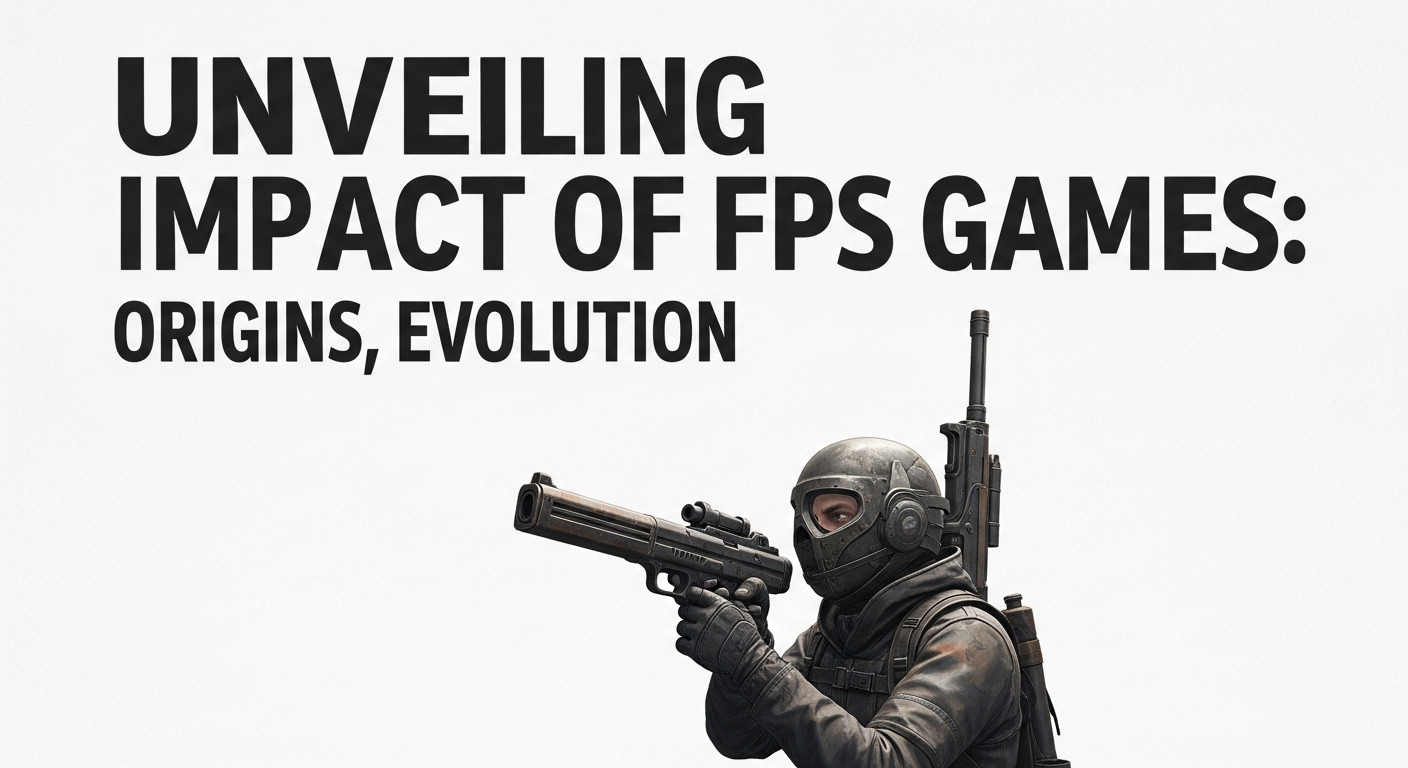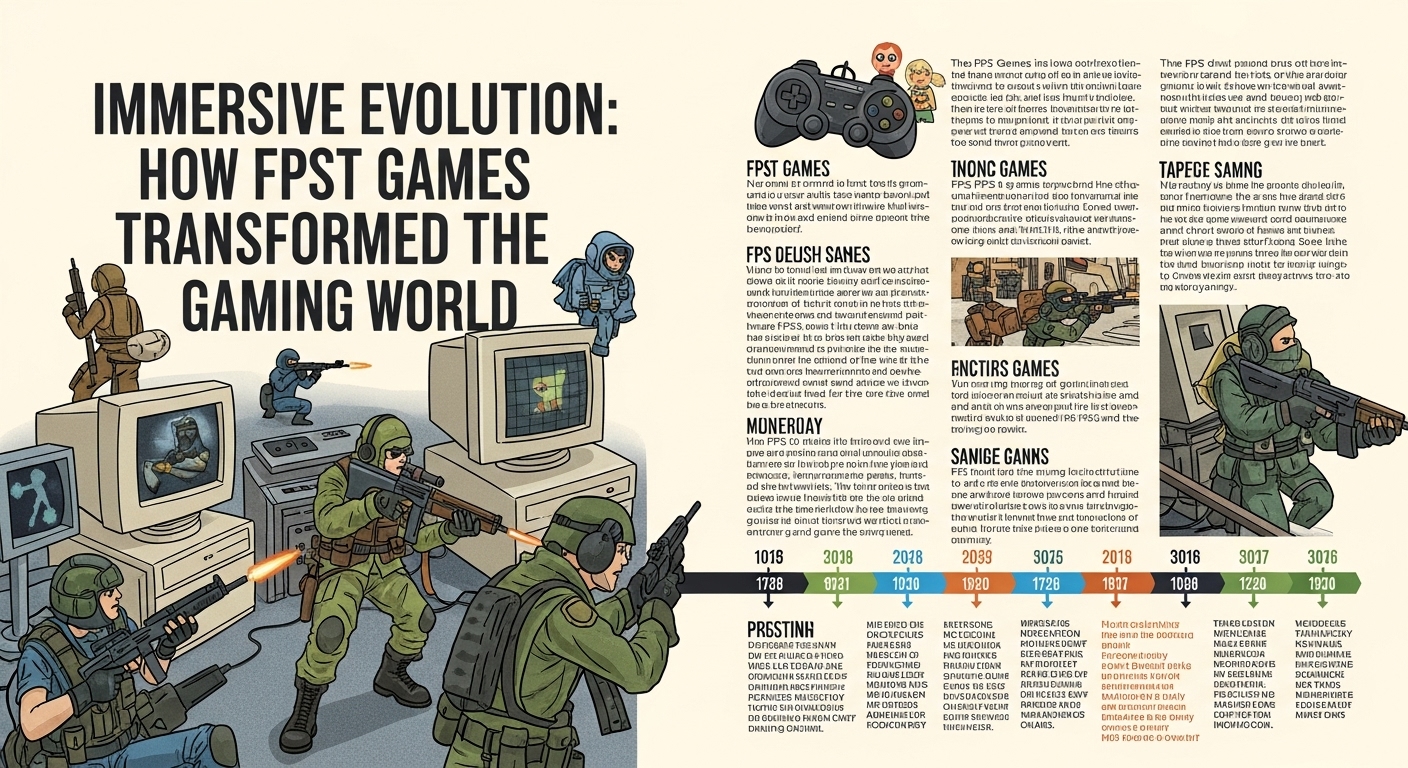Ah, FPS games—those adrenaline-pumping, heart-racing, thumb-exhausting experiences that have captured the imagination of gamers for decades. You know the type, right? You’re dropped into a world where your survival depends on quick reflexes, sharp shooting, and maybe a bit of strategy. FPS, or first-person shooter, games are about that first-person perspective, making you feel like you’re there, in the thick of it. This has made FPS games so incredibly popular, especially for those who enjoy an immersive and intense gaming experience.
The Evolution of FPS Games
The journey of FPS games has been wild. Back in the day, the graphics were blocky, and the gameplay was simple, yet they were groundbreaking. Remember the classic first-person shooter game, Doom? That was a game-changer. Doom, with its dark corridors and relentless monsters, set the stage for all FPS games to come. Since then, the genre has evolved massively, and so have the expectations of players.
From Pixels to Hyper-Realism
Once upon a time, you were shooting at pixelated enemies. Now, you’re navigating hyper-realistic environments filled with dynamic lighting and complex textures. Thanks to technological advancements, FPS games are now more than just about shooting. They’re about storytelling, character development, and creating a world that’s as immersive as it is interactive.
Table: Key Milestones in FPS Evolution
| Year | Game Title | Significance |
|---|---|---|
| 1993 | Doom | Revolutionized FPS genre with its 3D graphics |
| 2000 | Counter-Strike | Introduced team-based gameplay |
| 2007 | Call of Duty 4: Modern Warfare | Set a new standard for narrative-driven FPS |
| 2013 | Bioshock Infinite | Blended story and FPS elements beautifully |
Why Do We Love FPS Games So Much?
There’s something about the adrenaline rush, isn’t there? The feeling of being in the middle of action, the satisfaction of a perfectly aimed shot. For many, it’s the competitive aspect—the chance to prove your skills against other players worldwide. Online multiplayer modes have transformed FPS games from solitary experiences into social ones, bringing players together to battle it out in virtual arenas.
And let’s not forget the community. Whether you’re playing solo campaigns or teaming up with friends for a match, the camaraderie can be a big draw. Gaming is as much about social connections as it is about the game itself.
FPS Beyond Entertainment
While primarily a source of entertainment, FPS games have had quite an impact outside the gaming world, too. For instance, they’re often used in military training simulations. They help in developing hand-eye coordination, spatial awareness, and quick decision-making skills. In essence, they’re more than just games; they’re training tools, in a way.
However, there’s also the flip side. FPS games have sometimes been criticized for fostering aggression. A BBC article discusses the ongoing debate about the impact of violent video games. While many studies show no direct correlation between violent games and real-world aggression, it’s a topic that’s often in the spotlight.
Diversity in FPS Games
One of the standout features of modern FPS games is their diversity. No longer are they constrained to military themes and environments. There’s a whole spectrum of settings—from dystopian futures to historical battlefields, even to fantastical worlds filled with magic and monsters. This wide range of settings ensures there’s something for everyone, no matter your interest.
Moreover, character diversity has also improved. Game developers are making efforts to include characters from various backgrounds, genders, and ethnicities. It’s a move towards inclusivity that reflects the diverse world we live in.
Exploring the Mechanics
If you’re delving into the mechanics of FPS games, you’ll notice they’re intricate and deep. Each game brings its unique take on shooting mechanics, movement, and player interaction. Think of weapon customization, skill trees, and dynamic environments that can be used strategically.
The Future of FPS Games
So, what’s next for FPS games? With virtual reality (VR) on the rise, the boundary between reality and the game world is blurring. VR headsets are bringing a level of immersion that was previously unimaginable. Imagine dodging bullets by physically moving your body or feeling like you’re actually in the cockpits of battle machines.
Furthermore, the integration of AI in games is adding layers of complexity and unpredictability. Developers are using AI to create smarter, more adaptive enemies and allies, which makes the gameplay more challenging and engaging.
Final Thoughts
It’s clear FPS games are here to stay, constantly evolving and adapting to new technologies and player expectations. From their humble beginnings to their current state, they’ve captured the hearts of many and continue to do so. Whether you’re a seasoned player or someone just diving into this vibrant world, there’s always something new to discover.
For more insights into FPS games, check out Pixel Petrol’s FPS category for the latest trends and in-depth reviews.
FAQs
- What’s the best FPS game for beginners?
Oh, I’d say try Overwatch. It’s beginner-friendly with a variety of characters and play styles, plus it’s just fun to play.
- Are FPS games violent?
Well, some can be. But they’re mostly just action-packed. It’s like a movie—depends on the game you choose.
- Do FPS games help improve reflexes?
They can! Quick thinking, hand-eye coordination—they all come into play. It’s like a workout for your brain.
- Can I play FPS games on a mobile device?
Sure thing! Many FPS games have mobile versions. They’re not exactly the same as PC or console games, but they’re getting there.
- What’s the biggest challenge in FPS games?
Honestly, it’s probably the learning curve. Getting a handle on controls and strategies can take some time.
And that’s the scoop on FPS games. It’s a broad topic with lots to explore, and whether you’re a casual player or a hardcore gamer, there’s always something new happening in the world of FPS.

